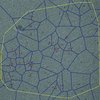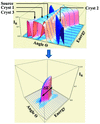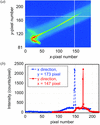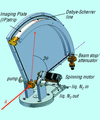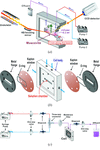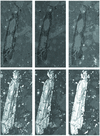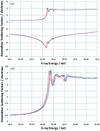issue contents
January 2013 issue
Includes papers presented at the Seventh International Workshop on X-ray Damage to Biological Crystalline Samples
Diamond Light Source, UK, 14-16 March 2012

Cover illustration: Radiation damage montage: the background shows an overlay of the first and last image of an exposure series of cryo-electron microscopy images. The sample suffered from beam-induced motions; these motions were tracked using gold fiducial markers (in red). A Voronoi diagram, shown in blue, is used for non-rigid registration of the images (see Karimi Nejadasl, Karuppasamy, Newman, McGeehan and Ravelli, pages 58-66). In the foreground, absorbed dose isosurfaces (0.11, 1.8 and 2.5 MGy) for a cuboid crystal, exposed during an X-ray diffraction experiment ten times along its length using a translation data collection strategy to spread dose more evenly, as calculated by Zeldin, Gerstel and Garman (pages 49-57).
facility information
radiation damage

 access
access access
access access
accessresearch papers
 access
access access
access access
access access
accessshort communications
computer programs
addenda and errata

current events



 journal menu
journal menu























